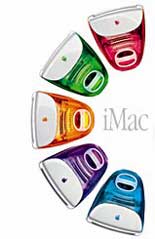 The
The
GAP-package is very good in working with finite
fields or Abelian extensions of the Rational numbers, but sooner or
later we will need to use the coordinate ring or function field of an
affine variety for which it is hopeless. On the other hand, there is an
excellent free package to do these calculations : Singular.
So, the ideal situation for us would be to be able to access Singular
from within GAP. Fortunately, Marco Costantini and Willem de
Graaf have written such an interface. Here is how to get in working
under OS X : One has to download two files from the Singular Mac OS X download page :
Singular-2-0-4-ppcMac-darwin.tar.gz and
Singular-2-0-4-share.tar.gz. Once they are on your desktop you
can follow the instructions on the INSTALL.html file in the 2-0-4
Folder of the expanded Singular-2-0-4-ppcMac-darwin. Keep the
tarred version and open the INSTALL-file in your browser (to be
able to copy and paste) and open up the Terminal. Do the analog
thing to
cd /usr/local sudo tar -pxf /Users/lieven/Desktop/Singular-2-0-4-ppcMac-darwin.tar sudo tar -pxf /Users/lieven/Desktop/Singular-2-0-4-share.tar
Then
follow the instructions making the symbolic links and you have Singular
working. The next step is to go to the GAP Packages page and go to the
package Singular for full documentation.
To use Singular in a GAP-session, here is an example
gap>
LoadPackage("singular");
The GAP interface to Singular
true
gap> StartSingular();
I Started Singular (version 2004)
gap> SetInfoLevel( InfoSingular, 2 );
gap> G:= SymmetricGroup( 3 );;
gap> R:= PolynomialRing( GF(2), 3 );;
gap> GeneratorsOfInvariantRing( R, G );
[ x_1 x_2 x_3, x_1*x_2 x_1*x_3 x_2*x_3, x_1*x_2*x_3 ]
gap> I:= Ideal( R, last );;
gap>GroebnerBasis( I );
I running GroebnerBasis... I done
GroebnerBasis. [ x_1 x_2 x_3, x_2^2 x_2*x_3 x_3^2, x_3^3 ]
gap>
Leave a Comment 
 If you
If you